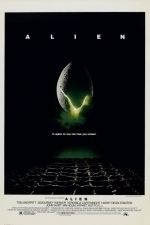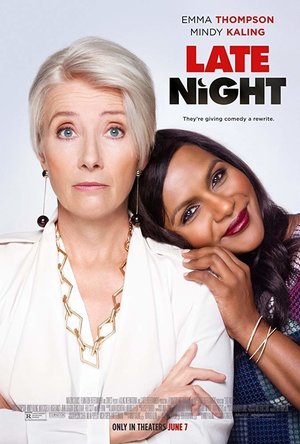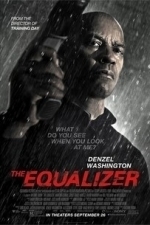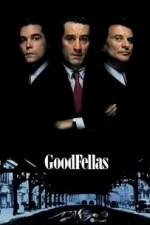Kristy H (1252 KP) rated The Identicals in Books
Feb 1, 2018
I've read a handful of Hilderbrand's novels by now and many of her books have a similar, beachy feel, often with a focus on twins (this makes more sense now, knowing that Hilderbrand is herself a twin) and wayward teens. There's always rampant gossip on Nantucket, which is her usual locale, yet you'll always be left wanting to visit (and in this case, the Vineyard as well). Things are typically a bit predictable and there's always a romance or two thrown in.
Still, this book especially peaked my interest as I have (young) twin daughters. I was pleasantly surprised by the plot and quite captivated by the book. It's a perfect beach read. Obviously you're not going to find a literary masterpiece, but if you're looking for escape, it's perfect. The plot is exciting, the characters complex enough (and up to their elbows in trouble), and the summery location makes you feel as if you're at the beach, experiencing the crazy gossip as it happens. I found myself quite drawn to all the characters--which doesn't always happen in novels like this--and especially liked headstrong teenage Ainsley and poor Harper, who just can't seem to get her life together.
Sure, things happen rather as anticipated at times and some of the characters' changes are pretty foreseeable. But they are a fun group and the supporting cast really adds depth to the story. The epilogue is a cute addition, as well. Overall, this is a pleasant, entertaining beach read and a step above many in the genre.
You can read my review of Hilderbrand's novel THE RUMOR <a href="https://www.goodreads.com/book/show/23341607-the-rumor">here</a>;.
<center><a href="http://justacatandabookatherside.blogspot.com/">Blog</a>; ~ <a href="https://twitter.com/mwcmoto">Twitter</a>; ~ <a href="https://www.facebook.com/justacatandabook/">Facebook</a>; ~ <a href="https://plus.google.com/u/0/+KristyHamiltonbooks">Google+</a>; ~ <a href="https://www.instagram.com/justacatandabook/">Instagram</a>; </center>
Darren (1599 KP) rated Alien (1979) in Movies
Jun 20, 2019
Actor Review: Sigourney Weaver – Ripley, just part of the crew really but steps up when the alien starts wreaking havoc. In a role that will be remembered as one of the best and most iconic in sci-fi history this performance will never be forgotten. Breakout Performance Award, Iconic Performance Award, Star Performance Award (10/10)
ripley
Actor Review: Tom Skerritt – Captain Dallas puts the team together to investigate the planet but has to step up when they don’t come back alone. Good performance showing leadership in time of panic. (9/10)
Actor Review: Ian Holm – Ash the science officer who is very distant as well as keeping a big secret from the rest of the crew. Good performance from Holm that opened a door for a twist in films that people actually have to think about. (9/10)
holm
Actor Review: John Hurt – Kane gets a creature stuck on his face before looking like making a full recovery only to make film history. This character has one of the most iconic sci-fi horror deaths in history. Unluckiest Character Award (9/10)
hurt
Director Review: Ridley Scott – Creates a world that no one saw coming and shows brilliant direction to create atmosphere throughout. (10/10)
Horror: There is no escape from a creature you have never met. (10/10)
Sci-Fi: Redefines the sci-fi genre to use true horror. (10/10)
Special Effects: Stunning special effects that even after 30 plus years still haven’t dated. (10/10)
Believability: We don’t know what is really in space until we go deeper enough. (5/10)
Chances of Tears: No (0/10)
Settings: When it comes to horror you need great location isolation is the best as we know the characters have nowhere to run, this offers that making the setting perfect. (10/10)
Suggestion: Most films can come and go and gain a few fans, this is not one of them it is one of the first films people will say when you say sci-fi. This makes it a must watch and when you do you will be reward but I expect most of you have already seen it so watch it again. (Watch)
Best Part: Alien first reveal.
Kill Of The Film: Kane
Trivia: The original title was Space Beast.
Oscar Chances: Won for Best Effects.
Chances of Sequel: Has three direct sequels and a couple of versus films.
Overall: Masterpiece classic must see
https://moviesreview101.com/2014/02/12/alien-1979/
Emma @ The Movies (1786 KP) rated Late Night (2019) in Movies
Jun 22, 2019 (Updated Sep 25, 2019)
Katherine is losing her TV show after years of being a late night icon. Where she wants serious and respectable guests, viewers tastes are edging ever closer to internet and pop culture celebs. She needs some fresh and relevant content, but the team is lacking fresh blood and the ideas just aren't coming.
Molly longs for a change of pace from working at the plants and she takes a chance and gets herself an opportunity to interview for the writing team. Pressured by Katherine to get results, Brad hires Molly to start on the entirely male team despite her less than popular when she takes the place of their recently fired colleague.
Mindy Kaling has done a great job on the script for Late Night, it's funny but still manages to transition to more serious moments. The characters all make great connections and Katherine and Molly are particularly fun together once Molly is able to break the tough shell of Katherine. The only slight quibble about it is that a couple of times I felt things didn't need to be there, but those scenes still worked well.
The story may be a new take, but it's a tale as old as time in this sort of comedy. It's predictable but in a way that you love because the chemistry on screen is so good and the outcome is genuinely what you want.
Emma Thompson on screen is a delight, there's even one point where we see her contemplating and she looks like a Jack Vettriano. The woman is a masterpiece. She can play anything (well, apart from a yeti, but that was more to do with the terrible scripting) and the role of Katherine really does come to life in her hands.
Kaling as Molly is a delight to see. Her always upbeat nature and genuine love for what she's doing shines through bringing a beautiful partnership out between her and Katherine.
The supporting cast is full of faces you'll recognise and all of them help this light-hearted comedy becomes something that genuinely made me smile.
Late Night was an unsurprising hit with me, when you have so many great things it's very difficult to create something bad.
What you should do
Have you looked at the news or Twitter today and sighed at just how depressing the world can be? If yes, go and see Late Night for a great mood lifter. If no, go and see Late Night for a great mood lifter.
Movie thing you wish you could take home
That suit Katherine wears right at the end of the movie... amazing.
Emma @ The Movies (1786 KP) rated Alone For Christmas (2013) in Movies
Dec 15, 2019
When Bone gets in trouble for the antics of his little brother Columbus he's banished to a dogsitter as the family go off for the holidays.
Bone, with the help of the other dogs, makes an escape after he realises his home is in danger. A group of burglars have their sights set on their valuables, but this is Bone's house and he has to defend it.
Its original title was Alone For Christmas, let's face it though, that's just not as good as Bone Alone. Is it a rip off of Home Alone featuring dogs or is it porn... who knows?!
The first thing you will notice about Bone Alone is the absolutely ridiculous effects used to animate the dog's mouths, it's truly awful, but thankfully it's easily forgotten once you get into it because... dare I say it? This film is pretty entertaining.
Add some dogs to a film and you've got me keen, get those dogs to execute a Home Alone plan on some unscrupulous baddies? Sold! Bone does not let his lack of opposable thumbs stop him making his house a fortress that even Kevin would be proud of. Honestly, I don't know how he thought of some of them, I'll be adding them to my own battle plan options shortly.
We've obviously got quality acting from the canine contingent, especially from our lead actors, Hooligan and Torpedo playing Bone and Columbus. Plus there are lots of little cameos from other floofy talents.
The human cast is classic TV movie, acting that's just cheesy enough that the film appears to not take itself too seriously. It's headed up by one of TV's favourite dads, David DeLuise, and as always he's the right sort of amusing to make the role work. The villains have your favourite traits but out of the three of them my favourite was definitely Phil played by John Kenward, he's the adorable buffoon that you really kind of feel for in the whole thing.
Generally the cast isn't made up of people you'd recognise, but then you spot Kevin Sorbo... I don't know what he's channelling when it comes to this role but it's not entirely good. There's a whole section of his story that I zoned out of, that was probably the only part of this masterpiece that I didn't get along with.
Bone Alone is a really fun film because it's equal parts ridiculous and amusing. I can't say there's much in it that's going to make cinematic history but I liked it and that's really all that matters.
Originally posted on: http://emmaatthemovies.blogspot.com/2019/12/bone-alone-movie-review.html
Gareth von Kallenbach (980 KP) rated The Equalizer (2014) in Movies
Aug 6, 2019
these rumors were true. A sequel would certainly be one worth the wait.
Based on the T.V. show of the same name which ran from 1985 to 1989 and starred Edward Woodward, the movie adaption of “The Equalizer” stars Denzel Washington, Chloe Grace
Moretz, Marton Csokas, David Harbour, Haley Bennett, Melissa Leo, and Bill Pullman.
Directed by Antoine Fuqua (Training Day, The Replacement Killers), “The Equalizer” premiered at the Toronto International Film Festival on September 6th and is set for it’s
U.S. premiere on Friday the 26th.
Denzel Washington portrays McCall, a man who has recently settled down to begin a new life quietly putting his mysterious past behind him. By day, he manages a large hardware store.
His nights are spent in quiet solitude with the exception of his visits to the 24-hour diner for tea down the street from his home where he befriends Teri (Moretz), an aspiring singer forced to work as a callgirl for a group of violent Russian mobsters based in Boston.
One night Teri goes missing and McCall learns that she was severly beaten by her pimp. Unable to sit by and watch the life of his friend ruined and perhaps ended, McCall emerges from his self-imposed retirement and armed with his ‘deadly skillset’ sets out to seek revenge anyone who preys upon the weak and finds his desire for justice reawakened.
“Are The Odds Against You? Need Help? Call The Equalizer”
I’m going to call this one right now: 4 out of 5 stars. Honestly, I really couldn’t find anything about the film I DIDN’T like. Sometimes the film slowed down, then it was like a switch was hit and it speed right back up but it was always good.
When the film did move to a slow pace, it was only to give ‘insight’ into the mindset of the McCall character. Particularly in the beginning when you’re learning about him.
It’s almost immediately inferred that he’s trying put his mysterious past behind him and settle into his new, quiet life. When McCall’s friend Teri is placed in jeopordy though, it’s like listening to the engine of a race car being started and primed. You know trouble is about to go down and McCall is going to be the one who ‘deals’ with that trouble.
The film is violent. Definitely too violent for the kids. It does deliver though. A “do unto others” film, if you will. Denzel depicts the ultimate interpretation of the phrase ‘What goes around, comes around” and does it with style.
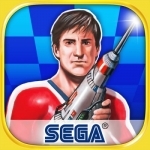
Space Harrier II ™ Classic
Games, Entertainment and Stickers
App
The classic on-rails ground-breaking shooter, Space Harrier II is now available on mobile! Play free...

Green Riding Hood
Book and Games
App
* "Free App of the Week" in 2017 * iPad App of the Year 2015 (Best of App Store, Russia) * Winner of...

ATracker PRO - Daily Task and Time Tracking
Productivity and Business
App
Introducing ATracker - Managing your time, beautifully. One tap to start / stop time tracking, with...

Mobile Legends: Bang Bang
Games and Entertainment
App
Join your friends in a brand new 5v5 MOBA showdown against real human opponents, Mobile Legends:...
Daniel Boyd (1066 KP) rated GoodFellas (1990) in Movies
Aug 25, 2020
Here me out here; Goodfellas is a religious story.
I know what you are thinking, “But Scorsese has already made religious movies with The Last Temptation of Christ and Silence. Goodfellas is about gangsters and murder and the only brief mention of religion in the movie is the fact that Karen is Jewish and Henry wears a cross.” Well none of that is strictly untrue, but there were just several points of the movie that I just couldn’t help but feel an implied religious undertone.
The first of which is in the opening scene of the movie, when Henry, Tommy and Jimmy open the boot of the car to finish off Billy Batts. The bright red tail light shines harshly on Henry’s face as he watches a man die and delivers his iconic voiceover: “As far back as I can remember, I’ve always wanted to be a gangster.” Here we are being introduced to a man who is capable of literally staring death in the face and metaphorically staring into the jaws of hell without even flinching.
From this point on, Henry is our guide into this forbidden underworld. He treats us the viewers as total newcomers to this chaotic landscape as he attempts to sell to us how great it is to live this way. It’s akin to Virgil guiding Dante through the various circles of hell in the Divine Comedy. This idea of Henry being a guide into hell is most explicit in the scene of his and Karen’s first real date at the Copacabana nightclub. In this scene we are treated to a glorious tracking shot that follows the couple all the way from their car to their seat directly in front of the stage. The first major direction we are taken is down. We descend down a staircase into a hallway painted red, in fact if you pay attention to the background in this entire sequence, there is almost always at least one red object onscreen. All the way to the table, Henry is greeted by various sinners as the ‘Then He Kissed Me,’ plays in the background; a song of seduction and lust.
Another example of this is the famous scene where Henry introduces us to various gangsters such as Jimmy Two Times through voiceover. Once again, the environment is littered with red light and dark shadowed areas as we are being introduced to a batch of sinners, thieves and murderers.
After Tommy’s death, the period of seduction in the movie is over. From this point on, we are seeing the intense fall of Henry’s world. It is just as chaotic as the first half of the movie, but now Henry and his friends are no longer in charge of the chaos and slowly they are beginning to lose control of everything that was once theirs. All of a sudden the momentum that has carried the movie and Henry’s life up until this point is brought to a halt, most obviously manifested in the scene of Henry driving far too fast despite being unaware of wait awaits him ahead and having to slam on his breaks and come to a screeching stop mere inches away from crashing. What direction is he looking just prior to this? He’s looking up for the chopper that he suspects has been following him, however he is also looking in the direction of Heaven, looking for a threat of something bigger than him that threatens to put a stop to his sinful lifestyle.
In the movie’s epilogue, once Henry gives up Jimmy and Paulie to the FBI, we see him in an entirely different environment. He’s dressed different, the weather is different and he describes how he is now just a nobody like everyone else as if that to him is a fate worse that death. Almost as if, he is in Limbo. No longer is he amongst the sinners in a world of gratification and sin, but instead he is in a ‘safe,’ environment where he can’t do anything even remotely illegal or morally questionable because he is being monitored by people just waiting for him to slip up. Then the very last shot we see is Tommy shooting at the audience. This is not only a very neat bookend as both the opening scene and final scene of the movie see Tommy committing a violent act, but it signifies that elements of Henry’s old life still follow him and he will spend the rest of his days looking over his shoulder for demons from his old life, like Tommy waiting to snuff him out.
Maybe I’m reaching slightly with this, but I feel like at least a few of these choices were intentionally put in by Scorsese. Especially the opening scene showing the murder of Billy Batts and the tracking shot as we are taken into the Copacabana. After watching recently watching Silence and The Irishman, it is clear that faith and mortality are both things that heavily weigh on Scorsese’s mind, so I don’t think that it is too much of a stretch to say that it was probably something that was at least in the back of his mind in 1990.
Regardless, this movie is a masterpiece and is still great no matter how many times you have seen it previously. It feels so authentic and genuine through the direction and presentation and the fantastic performances given by the respective cast members allow the characters to feel so real and deep. There is a reason that this is still considered as one of the seminal gangster movies. 10/10

